
Manufacturer's Specifications:
Turntable Drive: Belt.
Motor Type: Hall effect.
Speeds: 33 1/3, 45, and 78 rpm.
Wow & Flutter: ± 0.025% DIN wtd., ± 0.015% wtd. rms.
Rumble: -56 dB, DIN unwtd.
S/N: -80 dB.
Arm Type: Pivoted, with interchangeable headshells and ±5° VTA adjustment.
Power Requirements: 115 or 230 V a.c., 50/60 Hz.
Dimensions: 17 1/2 in. W x 5 1/4 in. H x 15 1/4 in. D (44.5 cm x 13.3 cm x 38.7 cm).
Weight: 17 lbs. (7.7 kg).
Price: $500 including tonearm.
Cartridge:
Type: High-output moving coil.
Stylus: Fine line, nude diamond.
Cantilever: Aluminum.
Stylus Tip Radius: 35 x 7µm.
Equivalent Stylus Tip Mass: 0.75 mg.
Output: 2 mV for 5 cm/S at 1 kHz.
Tracking Ability: 70 µm lateral at 315 Hz.
Recommended Load Impedance: 47 kilohms.
Internal Resistance: 80 ohms.
Frequency Response: 20 Hz to 40 kHz, +4,-1.5 dB
FIM Distortion: Less than 1.0%. Channel Separation: 25 dB at 1 kHz.
Channel Balance: Less than 2 dB at 1 kHz.
Lateral Compliance: 13 µm/mN (13 x 10^-6 cm/dyne).
Recommended Tracking Force: 2 grams, ±0.2 gram.
Weight: 4.1 grams.
Price: $200; replacement stylus, $100.
Company Address: 122 Dupont St., Plainview, N.Y. 11803.
Dual is a company in West Germany whose reputation for making top-quality turntables has endured for many years. I looked back through some old electronics catalogs and found a Dual Model 1006 record changer listed in 1961. At $79.95, it was considered an expensive, top-quality unit. In those days, most people opted for record changers rather than separate turntables and tonearms because most pop recordings were available on 45- and 78-rpm singles. The purists could still play their 33 1/3-rpm LPs manually with some of the record changers available back then. In 1961, the catalogs featured record changers made by such companies as Garrard, Webcor, Collaro, Glaser-Steers, VM, and Miracord as well as Dual. I must admit that I am a bit surprised to see that Dual is still in business since most of the other companies are gone now, or at least are not making record players. Dual still flourishes, located in the famous Black Forest area of West Germany, which has a reputation for craftsmanship going back many centuries.
The CS 5000 was a pleasant surprise because it combines both elegance and simplicity at a modest price. The Dual' OPS (Optimum Pivot System) tonearm, which is an integral part of the CS 5000, is quite sophisticated for a semi-automatic unit of this kind. The turntable was tested and auditioned using an Ortofon X3-MC moving-coil phono cartridge. Ortofon is also a name from the past which continues to command respect from even the most dedicated audiophiles. They were one of the first companies, if not the first, to begin producing high-quality moving-coil cartridges. The X3-MC is reasonably priced, and when it is mounted in the Dual OPS tonearm, the cost of the total package is quite low. The price is low enough, in fact, to elicit skepticism as to the level of performance which can be expected, when compared to the high cost of most audiophile record playing systems.
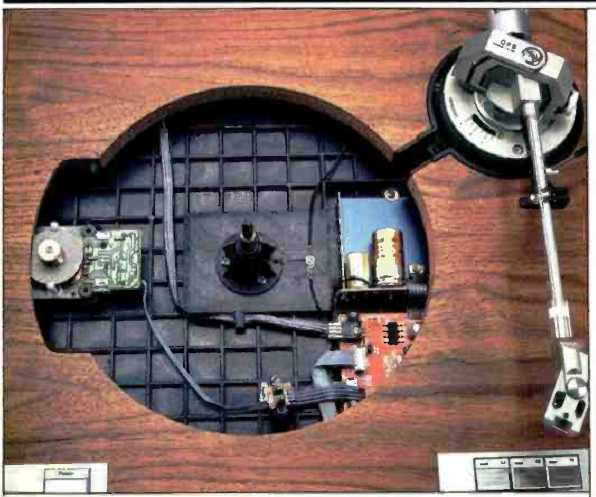
First Impressions
As I have indicated, I was pleasantly surprised to see that Dual had produced a record player which appeared to be both elegant in design and simple to use. It is very light; the whole unit, including the base and dust cover, weighs only 17 pounds. The walnut-veneer base is nicely styled, and the finish is excellent. The combination of walnut, satin-brushed aluminum, black rubber mat, and smoked plexiglass dust cover is very striking. The power switch is on the left front of the platform, while the three speed-selection buttons are on the right. I tapped the tonearm tube with a metal rod.
Tapping the tube near the main pillar produced a "tik" sound; tapping near the headshell produced a "tak." When I grasped the armtube, while holding the main pillar steady, I noticed that the bearings have a very slight amount of play.
I also observed that the headshell is different than others I have seen, because it has a system for adjusting the vertical tracking angle (VTA) of the phono cartridge stylus. There also is quite a delay between starting the turntable and the auto descent of the tonearm to the record. At 331 and 45 rpm, the delay is about 7 to 8 S; at 78 rpm, the delay is 12 S. It appears that the speed-sensing system is slow in determining that the platter is up to speed.
For a number of reasons-among them reputation, price, and appearance-I was anxious to set up the Dual CS 5000/Ortofon X3-MC combination so I could listen to it. I controlled myself, however, and completed the technical measurements first. By doing so, I was able to ensure that the turntable, tonearm, and cartridge were functioning optimally and that the listening evaluations were made under ideal conditions.

above: MEASURED DATA: Dual CS 5000 Turntable
Features
The CS 5000 turntable has three speeds, including 78 rpm, which is rather unusual. The speed of the Hall-effect motor is electronically controlled by comparing the speed of the platter's rotation to the exact frequency of a quartz reference oscillator. (This oscillator also serves as the reference for an automatic cueing system which lowers the arm only when the platter reaches full speed, and raises the arm if the speed changes) The electronic circuit boards are mounted to the molded plastic subchassis. There is no vernier control to vary the speed, which would have been nice for use with older 78-rpm recordings, many of which were not recorded at exactly 78 rpm. The cast-aluminum alloy platter weighs 2 pounds and has a ring of damping material inserted around its inside periphery. The thick, 2 pound, black rubber mat also provides damping for the platter's bell-like ringing modes. The platter is driven by a belt that runs from the motor pulley to an 8 5/8-inch-diameter ring on the underside of the platter. Two access holes in the platter allow the belt to be installed or removed easily. (If the platter needs to be removed for any reason, the belt must be taken off the motor pulley.) The main bearing and the center post are captive and fixed to the subchassis. A hole in the platter's center allows it to be slipped over the center post, which rotates with the platter. A ground wire is connected to the center post and to other metal parts of the turntable, exiting through the back of the base with the phono leads. These leads are not detachable and have ordinary phono plugs with red and white plastic insulators.
The speed sensors consist of a small extension from the bottom of the platter, about 33 inches from the center, which looks like a flat screwdriver blade, and a U-shaped plastic part fastened to the subchassis. The blade passes through the U-shaped sensor with each revolution of the platter. Perhaps this is why the speed-sensing system is so slow, since it is updated only once per revolution.
Four feet on the bottom of the base contain the springs that are used to suspend the subchassis on which the platter's main bearing and the tonearm are mounted. The method of adjusting these springs is not very clear in the booklet that accompanies the turntable. While adjusting them, I unintentionally popped off the little plastic inserts at the bottom, so I glued them back on. Dual says that these inserts are designed to be used only where extra isolation is required-with systems set on springy floors, for instance--and that leaving them off would "improve the bass response." Unfortunately, this information (which was not in the instruction manual) reached me after my tests were completed.
The a.c. power cord is detachable and has only two prongs. The smoked plastic dust cover can be removed by sliding it out of the hinges on the back of the base. These hinges have coil springs which hold the cover up even in intermediate positions. When the cover is fully open, 16 inches of clearance is required above the shelf or platform upon which the turntable rests. The CS 5000 will fit into an opening 17 3/8 inches wide by about 15 inches deep; if you remove the cover, you could change records and operate the turntable with only about 6 or 7 inches of clearance.
The CS 5000 is supplied with the Dual OPS tonearm. The vertical pivots are located in line with the surface of a record, which is considered to be the optimum location with respect to tracking any warps in a record. The counterweight, on the rear of the tonearm, is mounted below the record surface, which is also considered optimum. Part of the counterweight is isolated by a rubber compliance, which is meant to provide a sort of anti-resonance at the main tonearm/cartridge resonant frequency. This has been a feature of Dual tonearms for many years.
The OPS tonearm is of the dynamic balance type, which means that its tracking force is set by a coiled spring once the tonearm mass, including the cartridge mass, has been balanced statically by the counterweight. The calibrated knob for tracking force adjustment is located on the side of the main pillar. A calibrated anti-skating or sidethrust adjustment lever is on the front of the tonearm base.
The headshell includes a spring-loaded, plastic, cartridge mounting platform with an adjusting knob. This knob allows the VTA of the stylus to be adjusted to the optimum setting without having to use separate shims.
=============
MEASURED DATA
Dual OPS Tonearm
Pivot-to-Stylus Distance: 8.875 in. (22.5 cm).
Pivot-to-Rear-of-Arm Distance: 2.688 in. (6.8 cm).
Overall Height Adjustment: None.
Tracking Force Adjustment: Spiral spring, adjusted by knob on main pillar.
Tracking Force Calibration: 1 to 3 grams, within 0.1 gram.
Cartridge Weight Range: 2 to 10 grams.
Counterweights: One, 80 grams.
Counterweight Mounting: Positioned below record surface; plastic mount with threaded insert; rubber-mounted subweight.
Sidethrust Correction: Sliding lever on base of main pillar.
Pivot Damping: None.
Lifting Methods: Automatic at end of record; manual by damped cueing lever or fingerlift on headshell.
Headshell Offset: 26.5°. Overhang Adjustment: Slots in headshell.
Bearing Alignment: Very good.
Bearing Friction: Very low, with slight play.
Bearing Type: Dual gimbal.
Lead Torque: Very low.
Arm-Lead Capacitance: 160 pF, both channels.
Arm-Lead Resistance: 1.7 ohms, both channels.
External Lead Length: 40 inches (1 meter).
Structural Resonances: 200, 1600, 2350, 4400, and 5750 Hz.
Base Mounting: Center hole for arm post and three screws for base.
Ortofon X3-MC Cartridge
Coil Inductance: Left, 394 µH; right, 385 uH.
Coil Resistance: Left, 82.0 ohms; right, 75.9 ohms.
Output Voltage: Left, 0.41 mV/cm/S; right, 0.35 mV/cm/S.
Tracking Force: 2.1 grams recommended.
Cartridge Mass: 4.2 grams.
Microphony: Very low.
Hum Rejection: Very good.
Rise-Time: 9
High-Frequency Resonance: 23.3 kHz.
Low-Frequency Resonance: 8.7 Hz (in Dual OPS tonearm).
Low-Frequency 0: 7.3 (in Dual OPS tonearm).
Recommended Load Resistance: 47 kilohms.
Response to Load: No effect from resistances greater than 1 kilohm or capacitance less than 1,000 pF.
Polarity: Plus, for RIAA Standard.
============
There are several ways by which the tonearm can be raised and lowered. The automatic feature is most useful at the end of a record because is raises the tonearm and turns off the motor. To start a record, you bring the tonearm off the armrest and place the stylus over the record. When the turntable is up to speed (as determined by the underplatter sensor and quartz reference oscillator mentioned earlier), the tonearm descends to the record groove. Pressing any speed selector during play raises the tonearm. If the record ends, or if you pick up the tonearm with the fingerlift on the headshell (or the damped cueing lever) and place it on the armrest, the turntable shuts off, and the automatic lift rises.
The headshell is removable and is secured by a metal locking collar. Slots in the headshell allow cartridges to be mounted and adjusted using a supplied plastic template.
The Ortofon X3-MC phono cartridge is of the moving-coil type, which means that its magnets are fixed and that the coils for each channel are attached to the rear of the stylus which moves with the modulation in the record grooves. The X3-MC is a high-output design, so it can be connected directly to the MM phono input of a preamplifier or receiver without the need for the usual MC transformer or pre-preamp step-up device. High-output MC cartridges used to require more turns of wire in the coils. The slightly higher electrical resistance and inductance of these coils made the resistance of the tonearm wiring less of a problem. However, the coils' higher mass resulted in poorer high-frequency characteristics. Now, with stronger magnets available (and by clever design), this can be overcome.
Measurements and Listening Tests
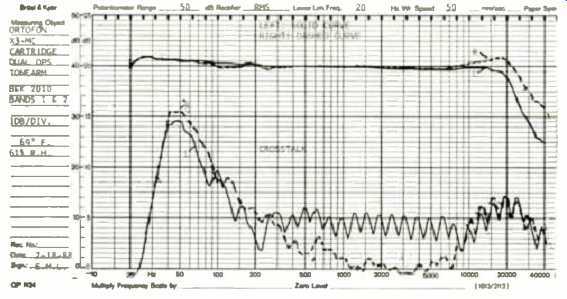
Fig. 1--Frequency response and crosstalk, Ortofon X3-MC cartridge in Dual
OPS arm of CS 5000 turntable.
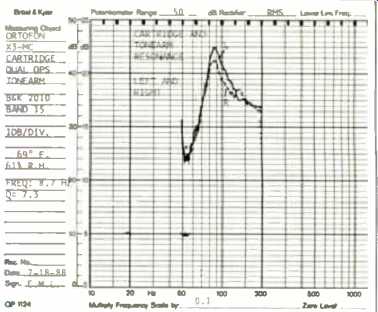
Fig. 2--Low-frequency tonearm/cartridge resonance is at 8.7 Hz, with a O
of 7.3. Test was conducted using slow sweep from 5 to 20 Hz.
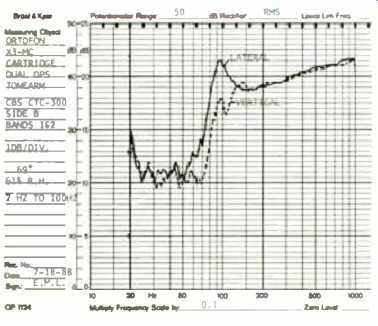
Fig. 3--Response to vertical and lateral modulation from 2 to 100 Hz (slow
sweep); damping is better in the vertical plane. Note the anti-resonance
at around 11 Hz. This is probably due to the counterweight suspension, which
helps control vertical tonearm motion.
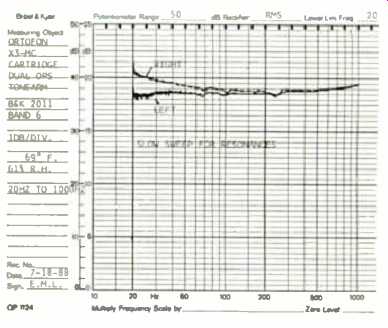
Fig. 4--Check of structural resonance in OPS tonearm, using slow sweep from
20 Hz to 1 kHz. A number of resonances are apparent.
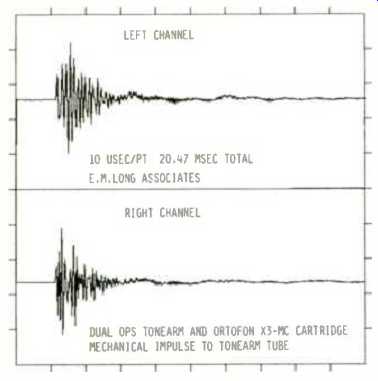
Fig. 5--Output vs. time of arm/cartridge when mechanical impulse was applied
to armtube, with arm on rest.
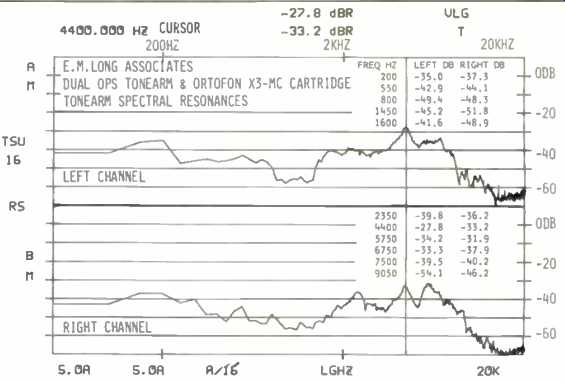
Fig. 6--Spectral output (averaged) of arm/cartridge for 16 mechanical impulses
applied to armtube. See text.
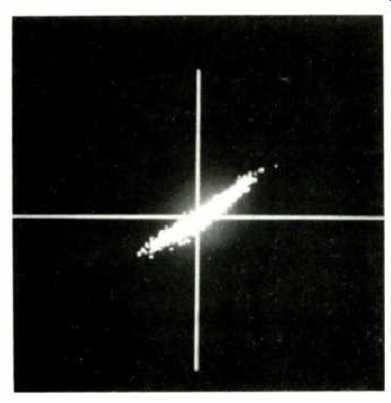
Fig. 7--Interchannel phase difference, using pink noise from E & K 2011
test record, band 7.
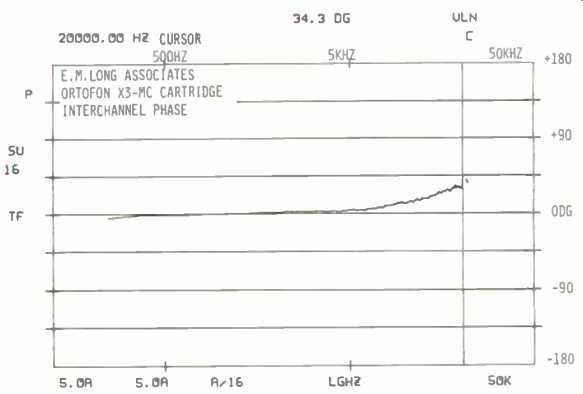
Fig. 8--Interchannel phase difference vs. frequency for B & K 2011,
band 7, pink noise. Phase difference at 20 kHz Is 34.3° (4.8 µS).
Even though the Dual CS 5000 turntable and Ortofon X3 MC cartridge combination is much less expensive than my reference system, I decided that it would be very enlightening to compare them. A group of listeners was assembled to act as a panel. After I gave them the usual cautions about not talking or making outward signs of approval or disapproval during the playing of the program material, they listened to a wide variety of musical selections on both systems. The panel members were given forms which allowed them to rate the systems (designated as "A" and "B") from 0 to-5 for each selection. Panel members were encouraged to make written comments describing the sound. After the listening session, I try to correlate these ratings and comments with the technical measurements.
As I mentioned previously, the measurements were completed before the listening tests to ensure that the systems were in optimum adjustment. Special absorptive panels were installed at the sides of the monitor loudspeakers to soak up any nearby reflections. These speakers are a new generation of my CSI Time Align monitors, which also incorporate the patented ELF (Extended Low Frequency) system. The monitors have high sensitivity and high power handling and are flat from 24 Hz to 24 kHz, with exceptional time domain characteristics. (I have been tempted to call these monitors "Ming" because they are so merciless in revealing everything, including the fact that we still don't make completely realistic, flaw-free recordings.) My audio system includes an absolute-polarity switch, and I have marked each musical selection with a plus or minus, indicating in which position the switch should be set.
Of course, each system is also checked for polarity. The Ortofon X3-MC cartridge gives a positive output for modulation toward the outside of the record, which follows the RIAA recommendation (in a bulletin issued September 12, 1973). Over the years, every cartridge that I have tested for Audio has followed this convention; because of this, I sometimes forget to mention the cartridge output polarity in my reports-even though I always check it.
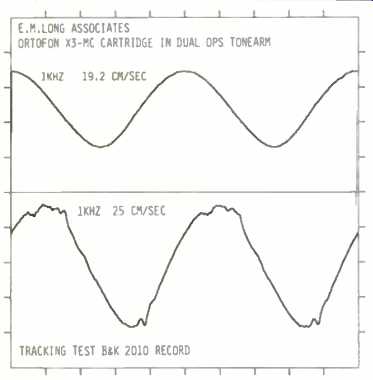
Fig. 9--Tracking of arm/ cartridge with 1-kHz test tones at 25 cm/S (highest
level on B & K 2010) and 19.2 cm/S. Even the highest level is tracked
moderately well.
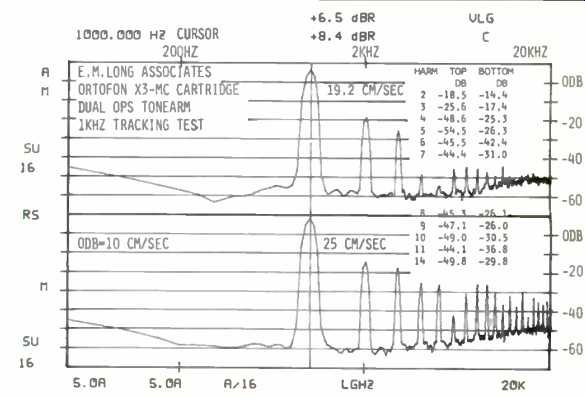
Fig. 10--Spectral analysis of arm/cartridge output when reproducing the
signals of Fig. 9.

Fig. 11--Output from 30 and 15-cm/S, 10.8-kHz pulse test, Shure TTR-103
test record.
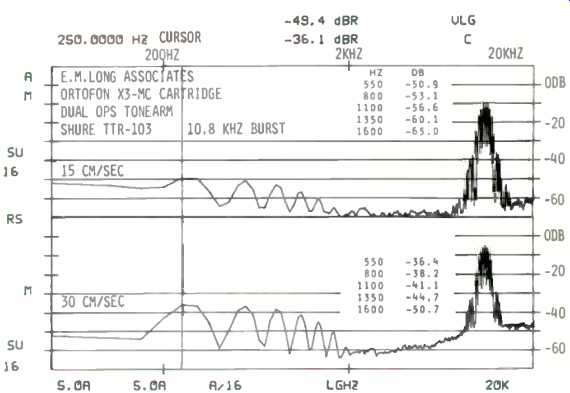
Fig. 12--Spectral analysis above the 10-cm/S, 0-dB of distortion products
from reference level. Output at signals shown in Fig. 11. 250 Hz is 0.63%
for the Output at 30 cm/S is 8 dB 30-cm/S band.
Figure 1 shows the amplitude versus frequency response and the interchannel crosstalk of the X3-MC cartridge mounted in the OPS tonearm. The very slight swayback in the response between about 2 and 7 kHz, which reduces the output about 1 dB, may account for comments by most of the panel members that the Dual/Ortofon combination sounded a bit less forward than the reference system. The reproduction of voice and trumpets was deemed better than that of the reference system. The excellent separation between the channels allowed the tested combination to match the reference system regarding any comments about the imaging and spaciousness of the sound.
Figure 2, which is the result of a slow sweep from 5 to 20 Hz, shows the low-frequency resonance due to the compliance of the Ortofon cartridge and the mass of the Dual tonearm. The O, which is related to the sharpness of the rise in output at the resonant frequency, is quite high. Low frequency sounds, such as those produced by the double bass and kick drum, are affected by this characteristic. The listening panel's comments indicated that the reference system was superior in the quality of the bass produced, even though the quantity was sometimes greater with the Dual/Ortofon combination.
Figure 3 demonstrates that the main effect of the low frequency resonance is in the lateral plane of motion. The scale is from 2 to 100 Hz, and the output is due to a slow sweep through this range. The dip in output at about 11 Hz, in the vertical plane of motion, is due to the anti-resonance effect of the counterweight mass and the compliance of its rubber suspension. This anti-resonance helps to control the tonearm motion in the vertical plane, which could be caused by record warps, and shows that the Dual design technique really does work.
Figure 4 shows the output of the right and left channels for a very slow sweep from 20 Hz to 1 kHz. The dips at 67, 100, and 250 Hz show that resonances are present, very likely due to the headshell coupling and the main pivots. These results also indicate that there is delayed reflected energy present. This energy could be partly responsible for some panel members' comments about a slight veiling of the sound on full orchestra and on strings and brass. The most interesting aspect of these delayed reflections is that, al though the dips appear at relatively low frequencies, the effects are heard in the higher frequency range.
This phenomenon is seen more clearly in the next two figures. Figure 5 shows the output of the left and right channels due to a mechanical impulse applied directly to the tonearm tube, near the headshell. Although the impulse is quickly damped, it definitely illustrates that the output is at higher frequencies and that there are delayed reflections present. Figure 6 represents the spectrum due to a series of impulses which were applied and averaged. Most of the output is in the range between 1,450 and 7,500 Hz. This delayed mechanical energy could affect the sound in such a manner as to reduce the perceived transparency.
Figure 7 demonstrates the excellent interchannel phase relationship between the left and right channels, with very little random scatter of energy. This good interchannel phase response is also indicated by the phase versus frequency response (Fig. 8); these results also show that image stability should be very good. The comments from the panel members regarding image stability bear this out, since the listeners rated the Dual/Ortofon combination as the equal of the reference system in this respect.
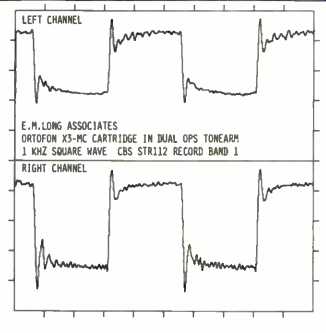
Fig. 13--Output from 1-kHz square wave, using CBS STR112 test record.
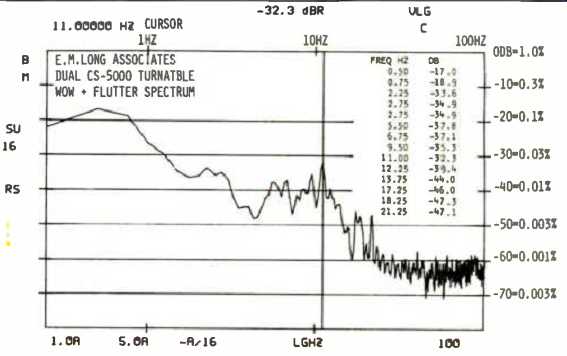
Fig. 14--Wow & flutter spectrum, from 0 to 100 Hz. Tonearm/cartridge
resonance Is visible at 11.0 Hz. See text.
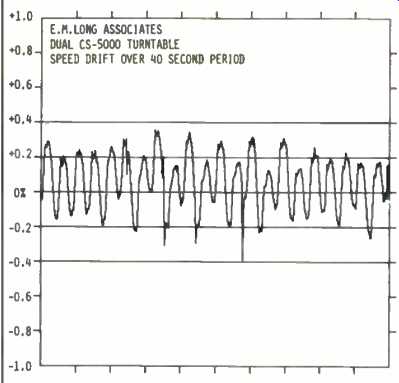
Fig. 15--Speed drift over a 40-S period.
The variations are at 1.8 S per cycle (0.56 Hz), related to the 33 1/3-rpm speed.
Actual average speed was 0.4% fast, so the 0% line has been adjusted to show pitch variations symmetrically.
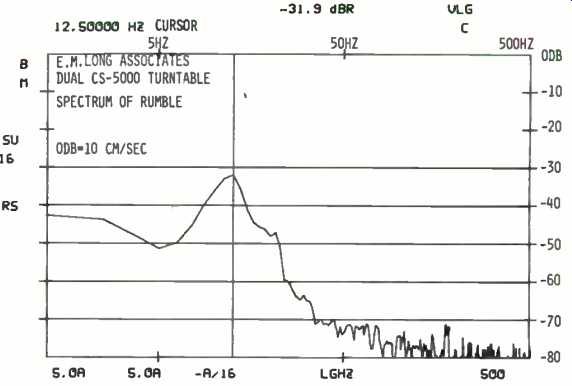
Fig. 16--Rumble spectrum.

Fig. 17--Output vs. time for mechanical impulse applied to edge of record,
with stylus resting in groove.
The turntable mat absorbs energy from the record fairly well and dissipates it quickly.
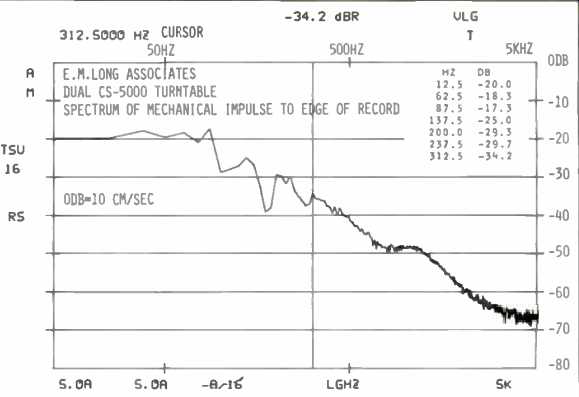
Fig. 18--Spectrum (to 5 kHz) of impulse response shown in Fig. 17 (average
of 16 samples).
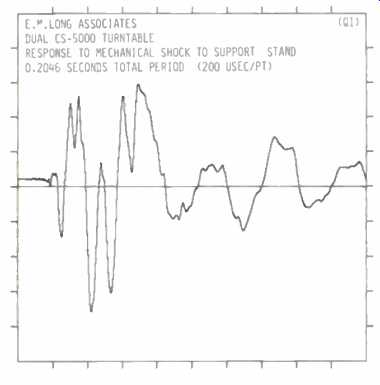
Fig. 19--Output vs. time for mechanical shock applied to the support stand
on which the turntable rested.
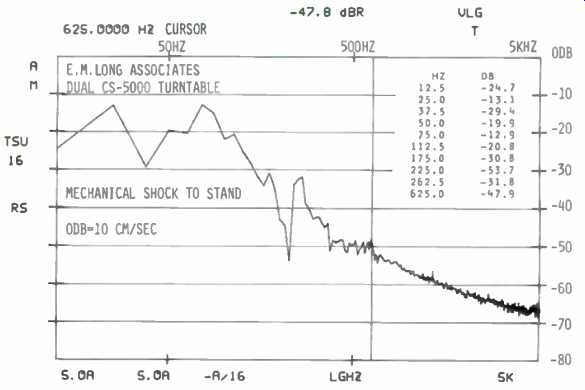
Fig. 20--Spectrum (to 5 kHz) of impulse shown in Fig. 19 (average of 16
samples).
Output versus time for the two highest levels at 1 kHz on the B & K 2010 test record is illustrated in Fig. 9. The output at 19.2 cm/S shows an excellent sine wave, while the output at 25 cm/S indicates that the stylus has difficulty tracing the peaks of the wave. This is still a very good result and demonstrates that the fine-line stylus is doing a pretty good job, since many cartridges will not do even this well. The effect of this performance upon the spectral output is shown in Fig. 10. It is easy to see the increase in level of the upper harmonics from 7 to 10 kHz. One panel member, who seems to be particularly sensitive to this kind of upper frequency distortion, said, after the listening sessions were over, that she changed her opinion about which combination was better during the high-level orchestral passages of one of the selections. For most of the previous pieces, she had rated the Dual/Ortofon combination equal to or better than the reference.
This is why, in the beginning of this section, I wrote about my monitor speakers being so merciless. They reveal aberrations and anomalies in recorded program material to such a degree that the slightly subdued and veiled sound of the Dual/Ortofon combination, which tends to mask these things slightly, can make many recordings more listenable. It wasn't until the Dual/Ortofon combination and the reference system were really stressed, by high-level program material, that the reference system demonstrated its superior quality.
Figure 11 is a graph of output versus time for two different levels of the 10.8-kHz pulsed tone-burst signal of the Shure TTR-103 test record. The Dual/Ortofon combination tracks the higher level very well, with the output showing very little asymmetry or compression. This good result is verified by the output spectra at these different levels (Fig. 12). Comments by panel members about the sound of cymbals and bells indicate that the tested combination was considered to be excellent. If the high-frequency tracking were not this good, these instruments would take on a leaden quality.
The output of the Dual/Ortofon combination for the 1-kHz square wave of the CBS STR-112 test record is shown in Fig. 13, and the result is quite good. The spectrum due to this output is not shown, but it revealed a very even distribution of harmonics; the odd-order harmonics were predominant, as they should be. The right channel showed slightly higher square-wave output, verifying Fig. 1, which shows greater high-frequency output from this channel.
Figure 14 illustrates the wow and flutter spectrum of the CS 5000 turntable. The contribution made by the tonearm/ cartridge resonance can be seen in the range from about 7 to 15 Hz. The anti-resonance of the isolated counterweight is probably responsible for the lack of a single, clearly defined resonance, which is good.
The way that the pitch of the sound is affected during each revolution of the turntable is demonstrated in Fig. 15.
The 0% line has been adjusted so that, even though the average speed is 0.4% fast, the variations in pitch are shown as plus and minus. The Dual CS 5000 performs well compared to other-even more expensive-turntables, and no comments were made by listening panel members which could be directly correlated with the cyclical pitch variation.
Even during high-level musical passages, where stylus drag increases, the motor torque was sufficient to keep the pitch from lowering.
The spectrum of the turntable's rumble components is quite low (Fig. 16), and the main components occur around the tonearm/cartridge resonance, which is normal. Comments were made by some panel members about rumble, but these were traced to the records themselves, since other program material was heard with practically no rumble at all.
Energy absorption from the record by the turntable mat is fairly good and is dissipated quickly. This is indicated by Fig. 17, which shows that the upper frequency components are greatly reduced in the first 100 mS. Figure 18 represents the spectral components due to a series of mechanical impulses applied to the edge of a stationary record, with the stylus resting in a groove. The distribution is reasonably uniform and decreases considerably in the range above 500 Hz. I also made acoustical measurements of the platter alone, and these showed that the damping material around the inside periphery is not very effective in reducing these modes. However, the turntable mat does do a good job of absorbing energy from the platter and completely eliminates the tendency to ring.
Figures 19 and 20 show the output versus time and the spectrum of the output due to mechanical shocks applied to the heavy support stand on which the turntable was resting.
These figures demonstrate that the CS 5000's suspension provides very good isolation from outside vibration.
Acoustical isolation tests were also made but are not shown. They indicated that the Dual/Ortofon combination has reasonably good isolation from airborne sounds, especially with the lid closed.
Conclusion
I have to admit that I was pleasantly surprised by the performance of the Dual CS 5000 turntable/Ortofon X3-MC cartridge combination, with regard to both the technical measurements and the listening evaluations. Over the years, I have tested many very expensive turntables, tone arms, and cartridges that have definitely increased the amount and quality of information which can be retrieved from the grooves of phonograph records. I have also tested, for my own information, some low-cost combinations. The differences between these and the audiophile combinations are quite obvious when comparing technical measurements and during listening evaluations. Even untrained listeners can hear the differences. The Dual/Ortofon pairing, however, is not as easily distinguishable from the expensive, top-quality systems. I can easily recommend this combination to anyone who desires high-quality phono performance but lacks the resources needed to purchase one of the more expensive systems. I congratulate Dual and Ortofon for having come up with a simple, integrated, and excellent sounding turntable, tonearm, and cartridge combination. To borrow a phrase from a well-known computer company, this might just be the record playing system "for the rest of us."
-Edward M. Long
(Source: Audio magazine, Nov. 1988)
Also see: Ariston Forte Turntable and Enigma Tonearm (Dec. 1988)
Dual Model 1249 Automatic Turntable (Feb. 1977)
= = = =